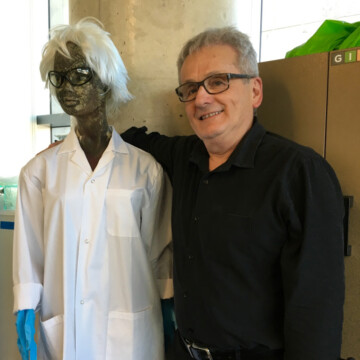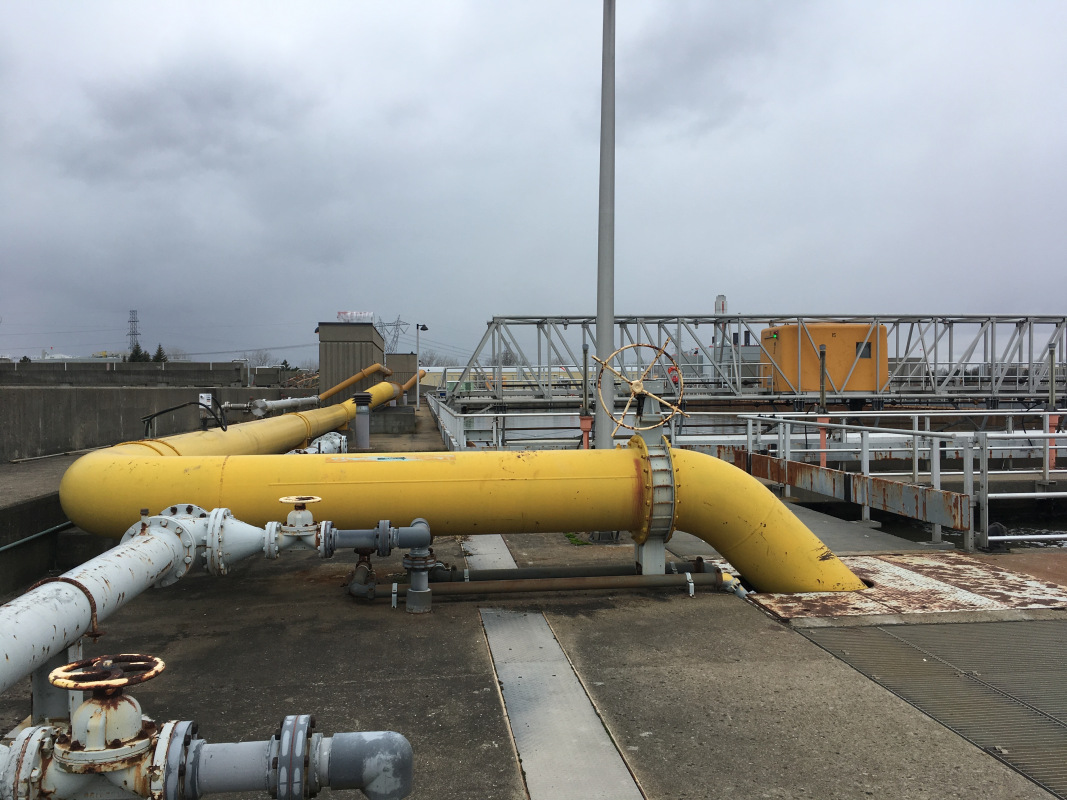DIGGING IN
What do a waste management infrastructure, a historic tannery site and bacterial enzymes have in common? This first field research question was investigated at the Station d’épuration Jean-R. Marcotte in Pointe aux Trembles (east Montreal Island), followed by soil sample collection at the site of the former Village des Tanneries (Saint-Henri), then the Speculative Life BioLab at the Milieux Institute (where I am Principal Investigator and Technician) and next, in Denis Groleau’s lab at USherbrooke.
[metaslider id=”26431″]
The wastewater treatment plant is an impressive, award-winning industrial infrastructure, both visually compelling as well as aurally. I will be editing a sound clip of all the recorded machinery, interior and exterior noises. I had recorded over an hour of these sounds but lost the entire recording when my phone died in the cold. Luckily, another of the field trip participants, PhD student, Tricia Toso had recorded all the same sounds and agreed to share her recording with me.
I had also planned to collect fluid and/or soil samples from both the wastewater treatment plant and the tannery site to culture on agar plates back in my lab. However, before I could even ask permission to do so, our friendly wastewater plant guide, Jean-Maurice asked me outright what I was doing with the sample tubes and told me directly that I was not allowed to collect any samples whatsoever. Since the wastewater treatment plant collects and treats not only household wastewater, but also all of Montreal’s industrial wastewater, this soup is likely quite hazardous before and during treatment (it is treated with various polymers). So, it makes sense that it is protected from the public, or rather, the public protected from it. I was a bit disappointed to leave with a rack of empty tubes nonetheless.
Our ambitious field trip schedule was a bit too ambitious and I had to leave the group before visiting the tannery, but thankfully another of the PhD students, Treva Pullen, collected soil samples for me from several locations in the Village des Tanneries. A few days later, I led a workshop in the Speculative Life BioLab with some of the members of the Montreal Waterways project, teaching them how to do serial dilutions and streak agar plates for bacteriological soil analysis. The plates were left to incubate and fester over the holiday break.
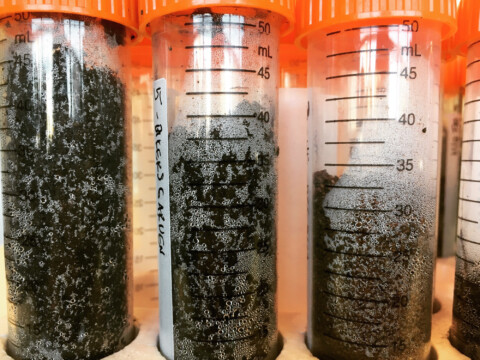
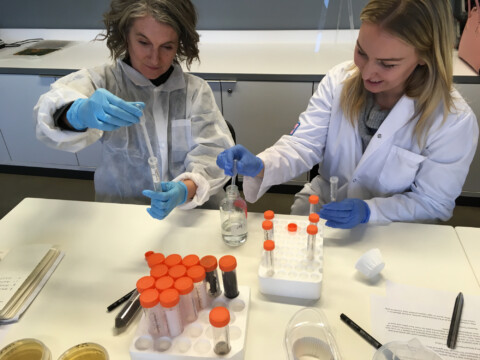
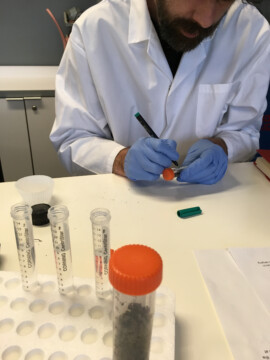


I also saved a few tubes of the soil samples to give to Denis when he visited the lab the following week. Denis will take the process of bacteriological analysis much further, identifying and isolating some of the bacteria types that will produce the enzymes we wish to work with in his lab. We will then isolate the specific enzymes to use in our project, as well as order a positive control bacteria strain that produces similar enzymes, to be sure that we are successful in our goal. I suggested Bacillus licheniformis specifically because it has the word lichen in its species name, as lichen research is one of my main independent activities right now (even though this bacteria is not actually lichen). We may go with a more psychrophilic (cold-loving) strain, however, since Denis is interested in working with enzyme production at low temperatures. I can hardly wait to get to work in the lab!
